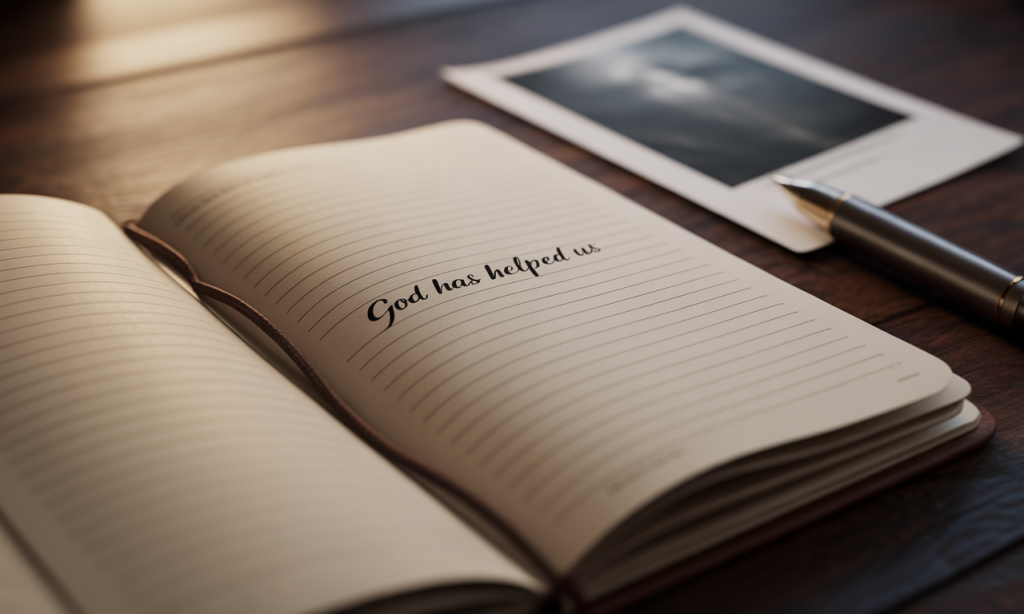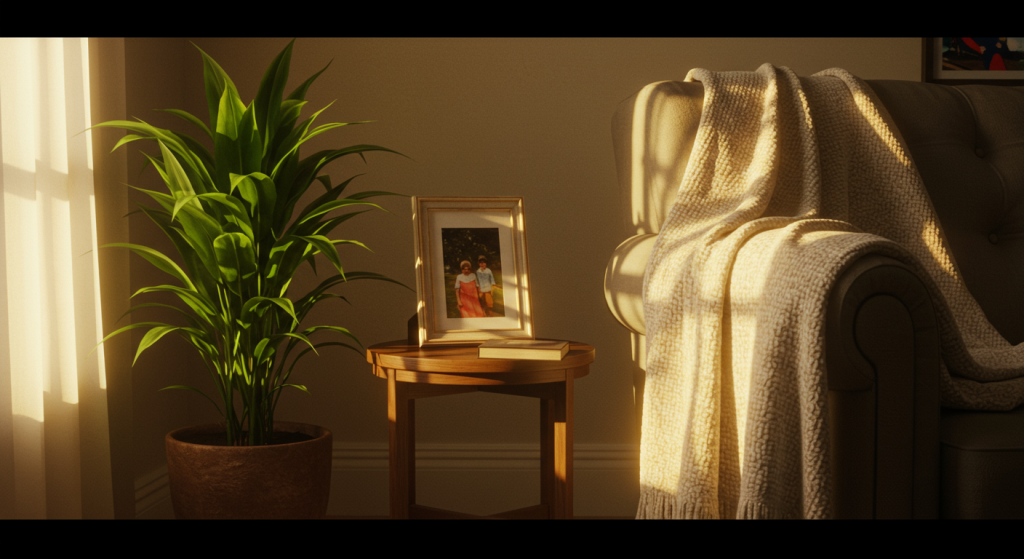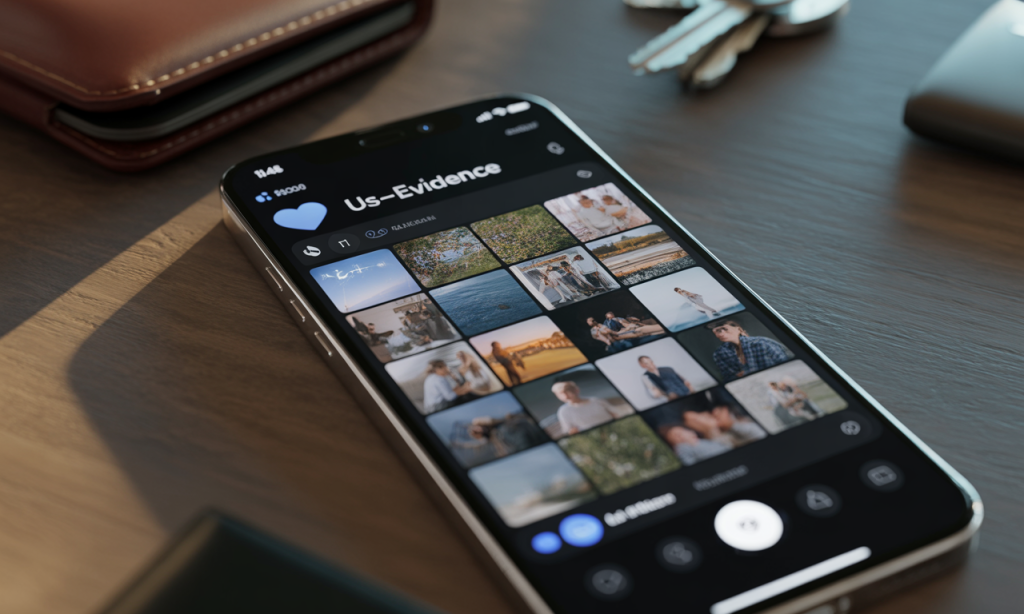When You Can’t See a Way Forward: How Looking Back Rebuilds Hope

When life feels heavy—money tight, tempers short, and the news not helping—imagining a brighter future can feel fake. That’s normal. In hard seasons our brains narrow to immediate threats, which makes hope feel far away. Here’s a gentler path: look back on what’s already true. The smiles in your camera roll, the long-ago inside jokes, the steady ways you’ve shown up for each other—all of that is evidence. In this cornerstone, you’ll learn a simple “remember → relive → restore” rhythm: how to surface the good you’ve lived, re-experience it together, and let it fuel your next step forward.
Why “Looking Back to Move Forward” Works When You’re Stuck
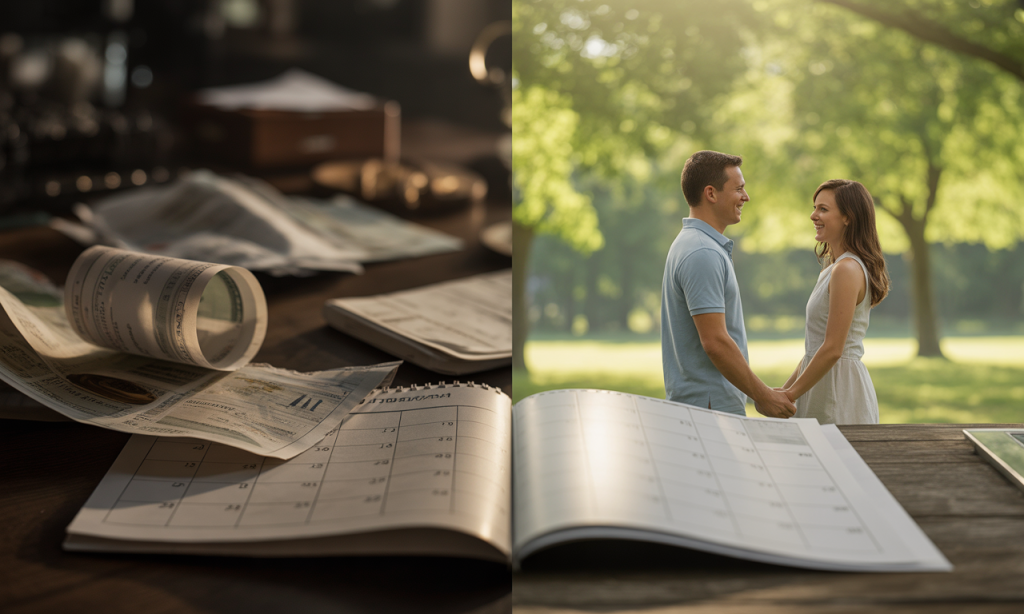 When stress spikes, your brain protects you by narrowing attention to the problem right in front of you. It’s like switching from panoramic to zoom. Useful in true danger, yes—but terrible for hope. Hope needs context. Remembering pulls you back to the wide angle: not just this bill, this fight, this week—but your whole story.
When stress spikes, your brain protects you by narrowing attention to the problem right in front of you. It’s like switching from panoramic to zoom. Useful in true danger, yes—but terrible for hope. Hope needs context. Remembering pulls you back to the wide angle: not just this bill, this fight, this week—but your whole story.
“Looking back to move forward” isn’t daydreaming. It’s evidence-based courage. You find proof in your shared past—times you repaired after conflict, moments you stayed gentle under pressure, decisions you made together when resources were thin—and then you bring that proof forward into today’s choices.
If you’ve tried pure future visualization and felt worse because the gap between “here” and “there” felt impossible, you’re not alone. We wrote about that dynamic in Why Future-Visualization Backfires (and What Works Instead); if that’s you, start there and borrow confidence from your past before you map the future. You can read that piece here: in hard weeks, “Why Future-Visualization Backfires (and What Works Instead)” at https://blog.liveyourbestmarriage.com/mindset/why-visualization-backfires.
The “Remember → Relive → Restore” Framework (Your Gentle Map)
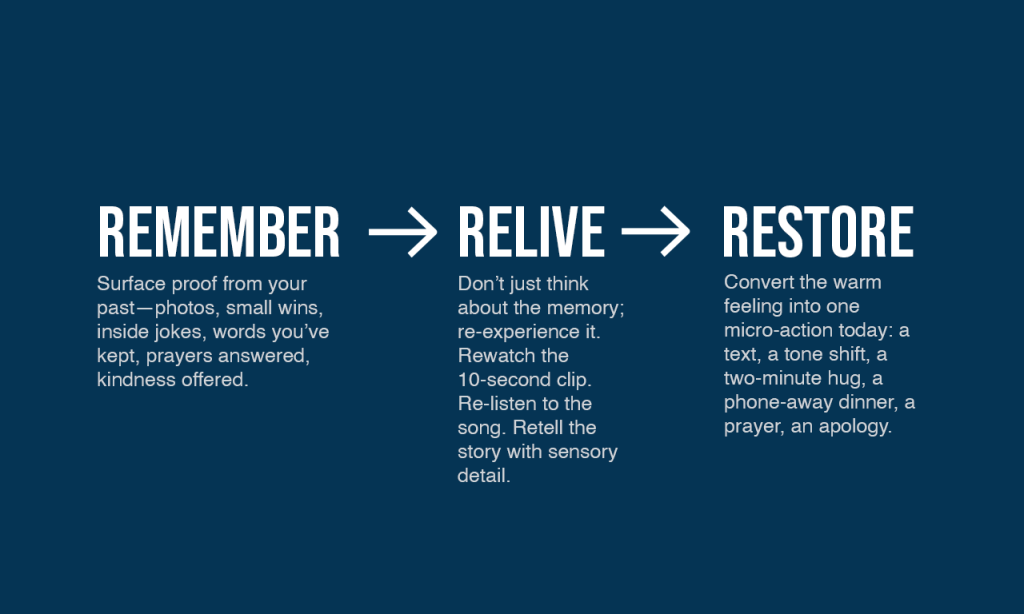 This cornerstone installs a repeatable rhythm you can run in five minutes or stretch into a date night. It’s simple on purpose:
This cornerstone installs a repeatable rhythm you can run in five minutes or stretch into a date night. It’s simple on purpose:
Remember. Surface proof from your past—photos, small wins, inside jokes, words you’ve kept, prayers answered, kindness offered.
Relive. Don’t just think about the memory; re-experience it. Rewatch the 10-second clip. Re-listen to the song. Retell the story with sensory detail.
Restore. Convert the warm feeling into one micro-action today: a text, a tone shift, a two-minute hug, a phone-away dinner, a prayer, an apology.
This three-step rhythm is the backbone for every tool below. If you want a practical companion, our article on the Five-Minute Rewind gives a pocket-sized version you can pull out during tense moments: see “The Five-Minute Rewind: A Micro-Practice for Hard Days” at https://blog.liveyourbestmarriage.com/micro-practices/five-minute-rewind.
Remember: Build a Memory Bank You Can Actually Use
 Most phones have thousands of photos that never help you on the day you need them. A Memory Bank fixes that. Instead of an overwhelming camera roll, you’ll curate a small, living folder that’s easy to reach when the mood dips.
Most phones have thousands of photos that never help you on the day you need them. A Memory Bank fixes that. Instead of an overwhelming camera roll, you’ll curate a small, living folder that’s easy to reach when the mood dips.
How to set up your Memory Bank (10 minutes):
- Create a shared album titled “Us—Evidence.”
- Add 30 images: not the fanciest, just the truest. Look for smiles that reached your eyes, moments you overcame, everyday scenes (messy kitchen victory meals count).
- Add 10-second videos where laughter and warmth are obvious.
- Create a pinned note called “Receipts” with one-line reminders: “03/12—You waited up for me with tea,” “04/20—We prayed before the interview,” “05/03—You handled the budget talk like a champ.”
Weekly deposit habit (five minutes): On Sundays, drop in one photo and one “receipt.” Over time you’ll build a highlight reel of faithfulness.
We break this system step-by-step in “The Memory Bank: Saving Good Moments for the Days You Forget” at https://blog.liveyourbestmarriage.com/habits/memory-bank-for-couples.
Relive: Photo Rituals That Soothe Your Nervous System
 Thinking about a good memory helps; re-experiencing it helps more. Your body believes what it feels. Use tiny rituals that let your nervous system taste safety again.
Thinking about a good memory helps; re-experiencing it helps more. Your body believes what it feels. Use tiny rituals that let your nervous system taste safety again.
Three photo rituals to try this week:
- Before-Bed One Photo (2 minutes): Each night, show one image and finish the sentence, “This reminds me that we…” Keep it tender and short.
- Throwback Thursday Date Starter (5–10 minutes): Begin date night by replaying a clip from your Memory Bank. Let it soften the edges before heavier conversations.
- Month-in-a-Minute (10 minutes): On the last day of the month, throw 8–12 photos into a quick slideshow and watch it on the couch. You’ll remember more than you think.
We walk through these rituals (plus scripts) in “Photo Rituals That Heal: Turning Your Camera Roll into Connection” at https://blog.liveyourbestmarriage.com/rituals/photo-rituals-that-heal. And when you’re ready to level up, build a compact filmstrip with “A 30-Photo Highlight Reel to Carry You Through Storms” here: https://blog.liveyourbestmarriage.com/projects/30-photo-highlight-reel.
Restore: Turn Warm Memories into Today’s Micro-Action
 Hope is not just a feeling; it’s a direction. After you remember and relive, restore something small right now—tone, touch, timing.
Hope is not just a feeling; it’s a direction. After you remember and relive, restore something small right now—tone, touch, timing.
Try this 60-second sequence (adaptable anywhere):
- See: Open one photo from the Memory Bank.
- Say: Name one feeling it stirs (steady, playful, grateful, brave).
- Do: Translate that feeling into a micro-action: a 30-second shoulder rub, “phone-face-down” for dinner, or “I hear you” plus a two-minute hug.
This is the heart of the Five-Minute Rewind practice. Keep it in your pocket for after an argument or a budget talk. When the heat rises, it’s faster to borrow calm from your past than to manufacture it from scratch. The full guide lives here: https://blog.liveyourbestmarriage.com/micro-practices/five-minute-rewind.
Anchor Objects: Let Your Home Cue Connection on Autopilot
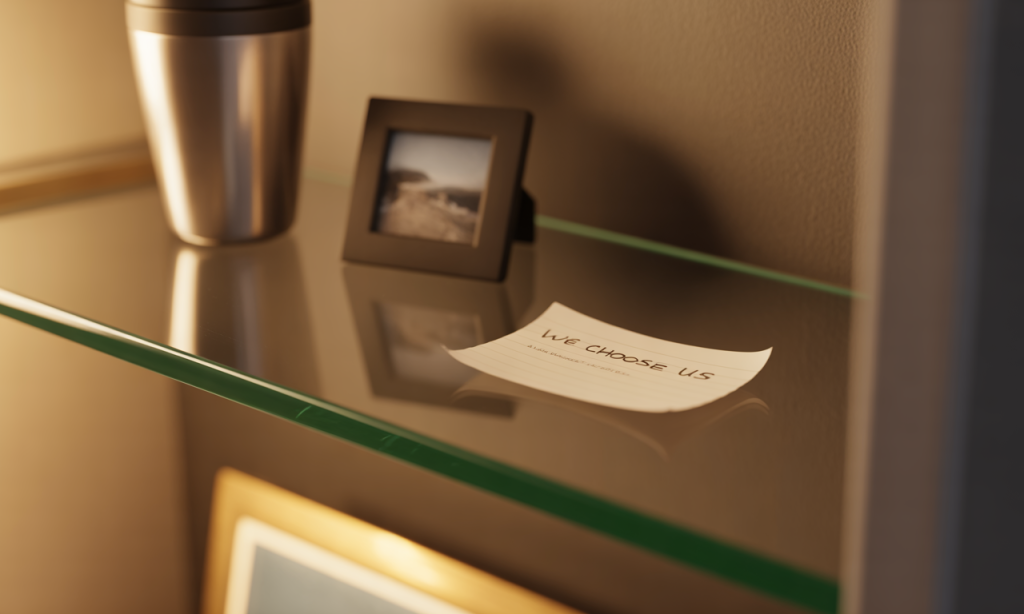 Your space can preach hope without saying a word. Anchor objects are physical reminders that trigger connection: the mug from your first trip, the keychain you bought when money was tight, the candle you lit while praying through a hard season.
Your space can preach hope without saying a word. Anchor objects are physical reminders that trigger connection: the mug from your first trip, the keychain you bought when money was tight, the candle you lit while praying through a hard season.
Place a few on your daily path:
- On the fridge: a photo from your favorite hike with a sticky note, “Same team.”
- By the toothbrushes: a tiny framed picture of a shared grin.
- Near the remote: a coaster from that café where you had your best conversation this year.
We walk through how to choose and place these triggers in “Anchor Objects: Little Things that Trigger Big Love” at https://blog.liveyourbestmarriage.com/home/anchor-objects-trigger-love.
Your Origin Story Still Speaks: From Friends to Forever
 Every couple has a beginning—a meeting, a risk, a laugh that wouldn’t quit. That origin story isn’t sentimental fluff; it’s your blueprint. If you fell for each other’s courage, honor that now. If you loved each other’s play, schedule play now. If you saw quiet faithfulness that day, name it again today.
Every couple has a beginning—a meeting, a risk, a laugh that wouldn’t quit. That origin story isn’t sentimental fluff; it’s your blueprint. If you fell for each other’s courage, honor that now. If you loved each other’s play, schedule play now. If you saw quiet faithfulness that day, name it again today.
A two-minute origin refresher:
- “The moment I knew we were us was…”
- “The value I saw in you then that I still want more of is…”
- “One way I can honor that value tonight is…”
To turn this into a mini-ritual, use “From Friends to Forever: Using Your Origin Story to Stabilize Today” at
When Future-Visualization Backfires, Borrow Confidence from the Past
In high stress, picturing a perfect future can feel like squinting at a far horizon. Your brain can’t connect the dots, so it quits. Instead of shaming yourself for not “believing hard enough,” change the method: borrow confidence from the past where you already have proof.
Try this script when the future feels foggy:
“Right now it’s hard to see the road ahead. Let’s find one time we faced something hard and got through it together. What did we do then that we can do again for 10 minutes today?”
If you’ve bumped into the “vision gap,” dig into our explainer and swap-in methods here: https://blog.liveyourbestmarriage.com/mindset/why-visualization-backfires.
Build a 30-Photo Highlight Reel in One Weekend
 Sometimes you need a stronger dose of “we can” than a single image provides. A 30-photo highlight reel is a one-minute film of your best truths: your smiles, your grit, your answered prayers, your ordinary mornings that turned tender.
Sometimes you need a stronger dose of “we can” than a single image provides. A 30-photo highlight reel is a one-minute film of your best truths: your smiles, your grit, your answered prayers, your ordinary mornings that turned tender.
Quick build (two sessions):
- Session 1 (30 minutes): Pull 50 candidates from your Memory Bank and mark your top 30. Favor breadth—play, service, family, faith, rest, teamwork.
- Session 2 (30 minutes): Drop them into your favorite slideshow app, add a caption or two (“Same team,” “Still choosing us”), and export a short video. Watch it before heavy talks and on anniversary weeks.
We lay out playlists, captions, and workflow tips in “Build Your Highlight Reel” here: https://blog.liveyourbestmarriage.com/projects/30-photo-highlight-reel.
Celebrate the Ordinary: Widen Attention Without Denying Reality
 When things are hard, the extraordinary can feel out of reach. But the ordinary is available daily—and it’s potent. A shared cup of tea is more accessible than a weekend away; a 10-minute walk beats “someday travel.”
When things are hard, the extraordinary can feel out of reach. But the ordinary is available daily—and it’s potent. A shared cup of tea is more accessible than a weekend away; a 10-minute walk beats “someday travel.”
A 7-day ordinary joy audit:
- Each evening, answer: “What made today gentle?”
- Capture one small moment: the way they handed you coffee, the hand squeeze during the TV show, the calm tone when you were frazzled.
- Drop a line in your Receipts note and—if you can—snap one photo.
For practical examples and an easy template, see “Celebrate the Ordinary: How Noticing Small Joys Changes the Mood of Your Home” at https://blog.liveyourbestmarriage.com/habits/celebrate-the-ordinary.
Faithful Remembering: Spiritual Practices that Sustain Hope
If faith is part of your story, your tradition already knows this rhythm: remember, retell, give thanks. In Scripture, people stack stones after rescue so tomorrow’s kids will ask why. You can stack “stones” in your home, too.
Four simple practices:
- Monthly “God Has Helped Us” list: One page, bullet points only, read aloud together.
- Prayer walk with photos: Stroll your neighborhood while scrolling your Memory Bank and thanking God for each “receipt.”
- Shared gratitude psalm: Write 8–12 lines naming what you see in each other and what you’ve survived together.
- Sabbath slideshow: Once a month, watch your highlight reel instead of a show; end with a simple blessing.
We give scripts and examples in “Faithful Remembering: Spiritual Practices to Recall God’s Goodness in Marriage” at https://blog.liveyourbestmarriage.com/faith/faithful-remembering-in-marriage.
Troubleshooting: What If Our Past Is Complicated?
Not every memory is soft. Some seasons hold trauma, betrayal, or grief. “Looking back to move forward” doesn’t mean reliving pain or pretending harm didn’t happen. It means curating what’s safe and strengthening—and getting qualified help where it isn’t.
Guidelines for hard histories:
- Curate: Choose memories that are strengthening and non-triggering. It’s okay to skip entire seasons and focus on slivers of good.
- Segment: If some topics are tender (e.g., finances, in-laws), keep your Memory Bank centered on neutral or joyful categories like nature walks, shared service, favorite foods, or pets.
- Support: If the past carries unhealed harm, a trauma-informed counselor can help you process and rebuild safety.
- Slow is fine: Take this rhythm in sips. One photo a week still counts.
When you’re in active healing, pair remembering with concrete boundaries and present-tense safety. Our article on anchor objects (linked above) can be especially gentle because it focuses on neutral, everyday cues.
Make It Stick: A 30-Day Plan to Practice Looking Back to Move Forward
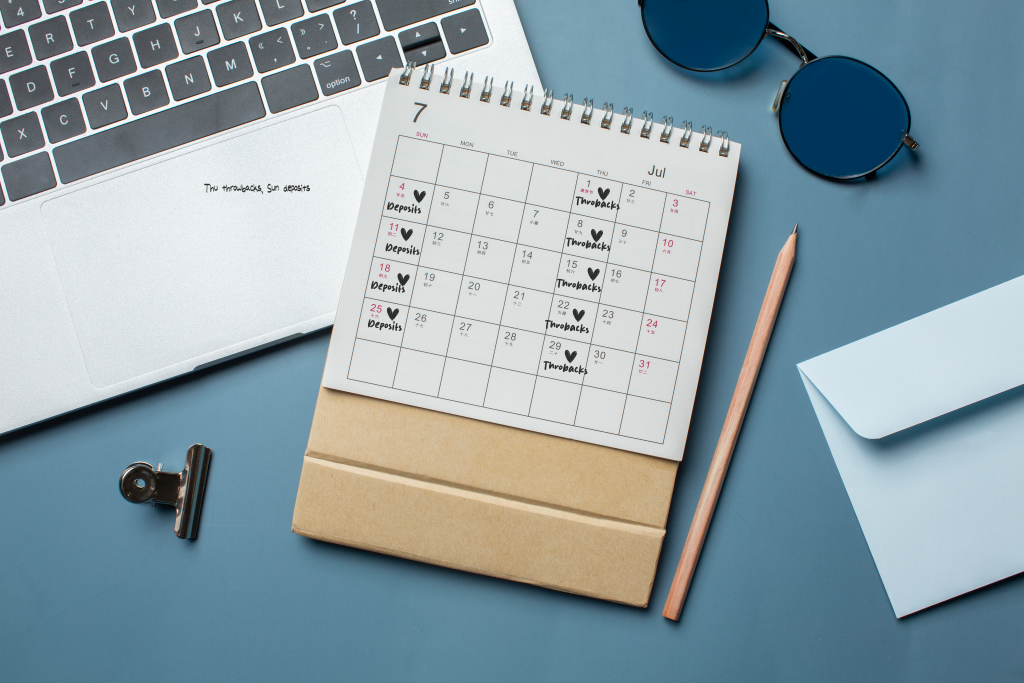 Here’s a light, repeatable plan you can begin tonight. It’s intentionally small so you’ll actually finish it.
Here’s a light, repeatable plan you can begin tonight. It’s intentionally small so you’ll actually finish it.
Week 1 — Gather
- Build your Memory Bank with 30 photos and a Receipts note.
- Install the Before-Bed One Photo ritual.
- Place one anchor object where you’ll see it every morning.
- Read “The Memory Bank” and try the Sunday deposit habit: https://blog.liveyourbestmarriage.com/habits/memory-bank-for-couples.
Week 2 — Relive
- Do the Month-in-a-Minute slideshow on day 14.
- Start date nights with a 5-minute Throwback clip.
- Build your 30-photo highlight reel: https://blog.liveyourbestmarriage.com/projects/30-photo-highlight-reel.
- Add a line nightly to your Receipts note.
Week 3 — Restore
- Use the Five-Minute Rewind after your next tough conversation: https://blog.liveyourbestmarriage.com/micro-practices/five-minute-rewind.
- Choose one micro-action per day: a two-minute hug, a “phone-face-down” meal, a 10-minute walk.
- Revisit your origin story with the two-minute refresher, then read “From Friends to Forever” for deeper prompts: https://blog.liveyourbestmarriage.com/identity/origin-story-stabilizes-today.
Week 4 — Sustain
- Practice the 7-day ordinary joy audit and read “Celebrate the Ordinary” for templates: https://blog.liveyourbestmarriage.com/habits/celebrate-the-ordinary.
- If faith is central for you, run a Sabbath slideshow and write your gratitude psalm with “Faithful Remembering”: https://blog.liveyourbestmarriage.com/faith/faithful-remembering-in-marriage.
- If future-visualization still feels discouraging, revisit “Why Future-Visualization Backfires” and use the “borrow confidence” script: https://blog.liveyourbestmarriage.com/mindset/why-visualization-backfires.
By day 30, you won’t have a perfect marriage (no one does), but you will have a practiced identity: we are the couple that looks back to move forward—we collect proof, relive safety, and restore hope in tiny, daily ways.
Scripts for Real Moments (Because Life Is Messy)
 After a tense budget talk
After a tense budget talk
“Let’s do a quick rewind. I’m grabbing our highlight reel and looking for the time we high-fived over paying off the car. I want to bring that energy into this conversation. I love that we’re a team.”
When one of you feels flat or distant
“I don’t have big words tonight. Can we look at one photo from our Memory Bank and name one thing we still want to be for each other this week?”
Before a heavy decision
“Let’s remember how we chose together last time we were scared. We gathered facts, we prayed, we slept on it, and we kept our tone kind. Want to do that again now?”
When future talk triggers anxiety
“I’m tempted to jump to five-year plans. But I want to borrow confidence from our past first. What’s one time we were under-resourced and still did the next right thing?”
Common Pitfalls (and How to Avoid Them)
- Dumping the entire camera roll into the Memory Bank. Curate. Thirty photos beats three thousand.
- Using memories to avoid repair. Remembering is not a loophole; it’s fuel for action. If a repair is needed, use the warmth to make the apology or boundary.
- Forcing nostalgia during a raw moment. Sometimes you need space first. Do a body reset (drink water, take a walk) and come back to the Memory Bank later.
- Making the other person perform. Invite, don’t demand. “I’d love to look at one photo with you—no pressure.”
- Perfectionism. A 10-second practice is better than a 60-minute ideal you never do.
Frequently Asked Questions
 Isn’t looking back just nostalgia?
Isn’t looking back just nostalgia?
Not as we’re using it. We’re not escaping into the past; we’re extracting fuel from it—proof of who we are together—so we can act with steadier hearts now.
What if we don’t have many photos?
Use senses and scenes instead: the smell of rain on the porch, the sound of the old kettle, the feel of their sweater on your shoulder during winter services. Jot these in your Receipts note.
We’ve had a really rough year. Will this still help?
Gentle, curated remembering tends to reduce defensiveness and soften tone. Pair it with boundaries, honest conversations, and help from a professional if you’re dealing with trauma or ongoing harm.
How often should we do this?
Tiny and daily wins. One photo before bed. A highlight reel once a month. A Five-Minute Rewind after hard talks. Anchor objects that whisper hope without effort.
Your Next Step: Choose One Tiny Action Today
- Pick one photo and name one feeling it gives you.
- Do one micro-action from that feeling in the next ten minutes.
- Schedule one ritual this week: either the Throwback Date Starter or the Month-in-a-Minute.
If you want the simplest place to begin, start with the Memory Bank here—your future self will thank you when the next hard day hits: https://blog.liveyourbestmarriage.com/habits/memory-bank-for-couples. And when you’re ready to turn the warmth of memory into motion, keep the Five-Minute Rewind handy: https://blog.liveyourbestmarriage.com/micro-practices/five-minute-rewind.



